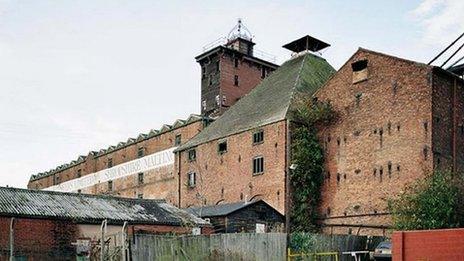Shrewsbury Flaxmill Maltings: Roof restoration completed
- Published
The mill with a future
The restoration of the roof on a Grade I-listed mill has been completed, Historic England has said.
Built in 1797, Shrewsbury Flaxmill Maltings is thought to be the first iron-framed building and is considered a forerunner to the skyscraper.
Historic England bought the derelict site in 2005 and a major renovation is expected to be completed in 2021.
Chief executive Duncan Wilson said it was a "significant milestone" in bringing the building back into use.
A £20.7m Heritage Lottery grant and funding from Historic England, Shropshire Council and the Friends of the Flaxmill Maltings will see the mill and the Grade II kiln become a new learning and enterprise quarter.
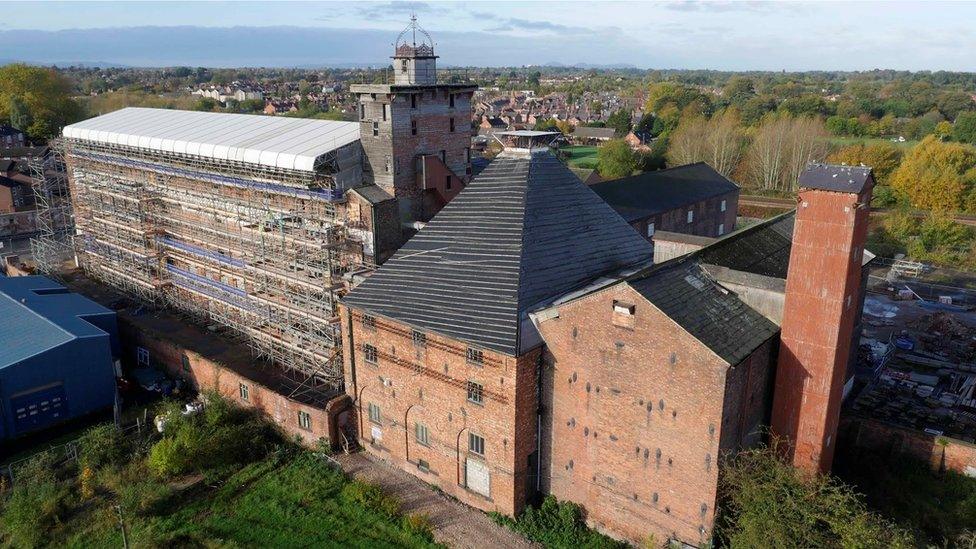
The building fell into disrepair before being bought in 2005
During the Industrial Revolution, the mill was Shrewsbury's largest employer with more than 800 men, women and children manufacturing flax into linen cloth before it closed in 1886, Historic England said.
It later reopened to produce malt for the brewing industry and went on to serve as a barracks for soldiers during World War Two before finally closing as a maltings in 1987 and then falling into disrepair.
In 2015 after restoration work, the Grade II-listed office and stables were converted into a small exhibition and visitor centre.
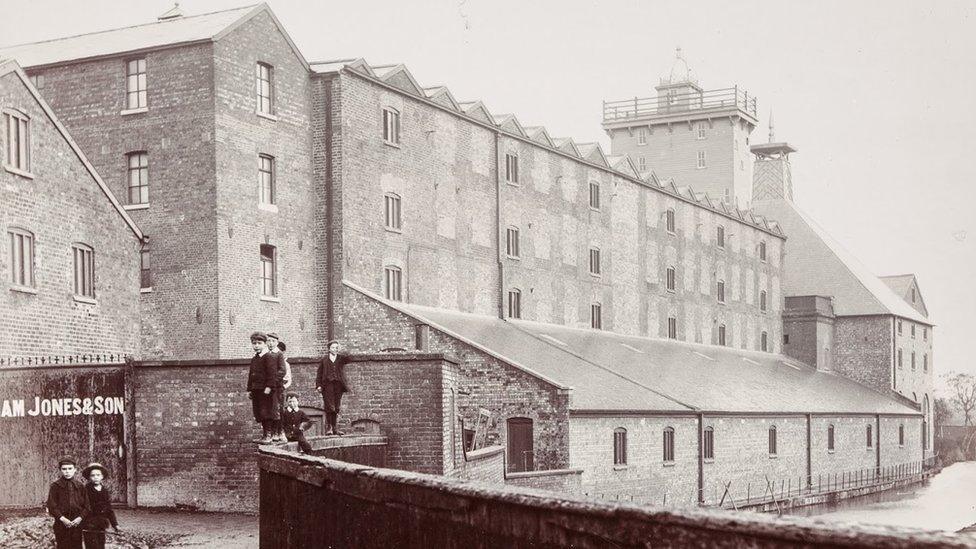
The building stopped manufacturing flax in 1886
Now, 15,000 slates from Penrhyn Quarry, the only remaining source of original North Wales slate, have been used to restore the roof, which the mill would have had when it was first constructed.
"This moment, seeing the scaffolding coming down after a decade and the original roof completely restored is a significant milestone in the project to restore Shrewsbury Flaxmill Maltings," Mr Wilson said:
"The sensitively renovated building will create a much-needed hub for the area - of industry, learning and creativity."
There are eight listed buildings on the site, Historic England said.
- Published25 November 2015
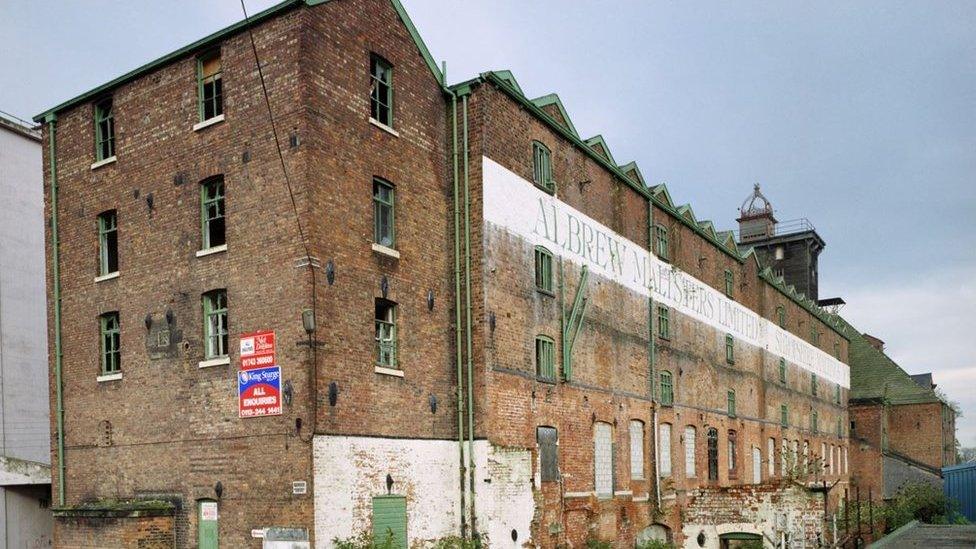
- Published20 February 2015
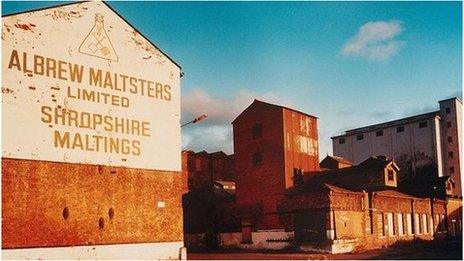
- Published14 September 2014

- Published18 March 2014

- Published15 March 2014
